Ahead of MTC’s revival of The Lady in the Van, designer Alicia Clements was tasked with creating two life-size vans for the stage. This required a herculean effort from both contracted and permanent MTC staff over a six-month pre-production period.
Step 1. Construction of the van began in November 2018 in West Brunswick, where Clements’s design sketches were brought to life in their earliest stages.
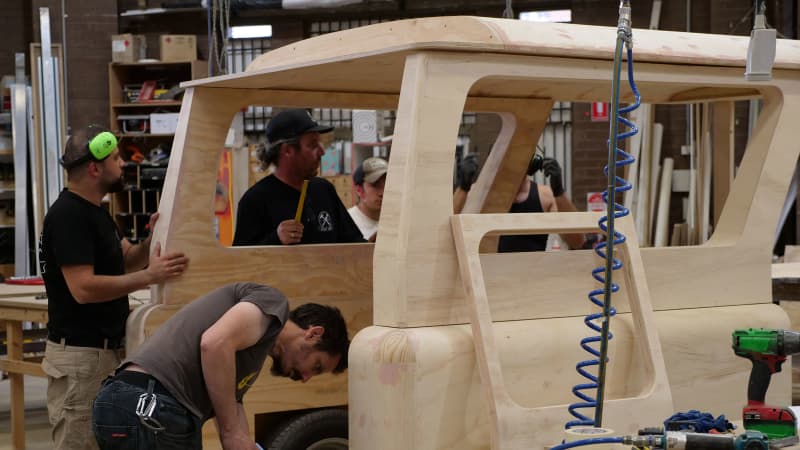
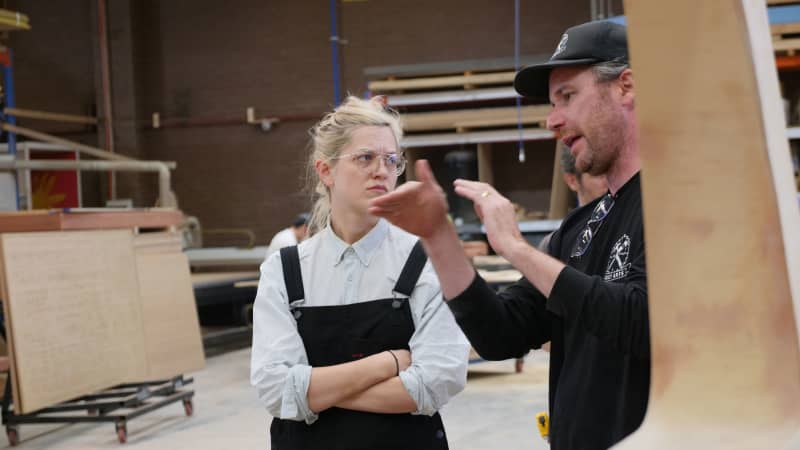

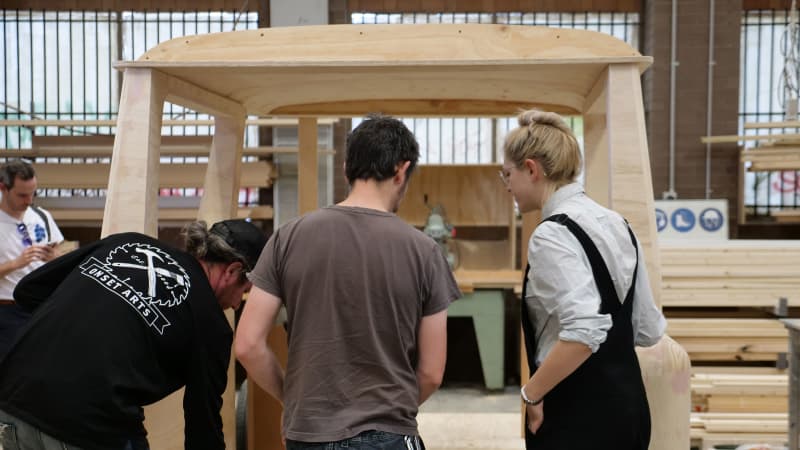
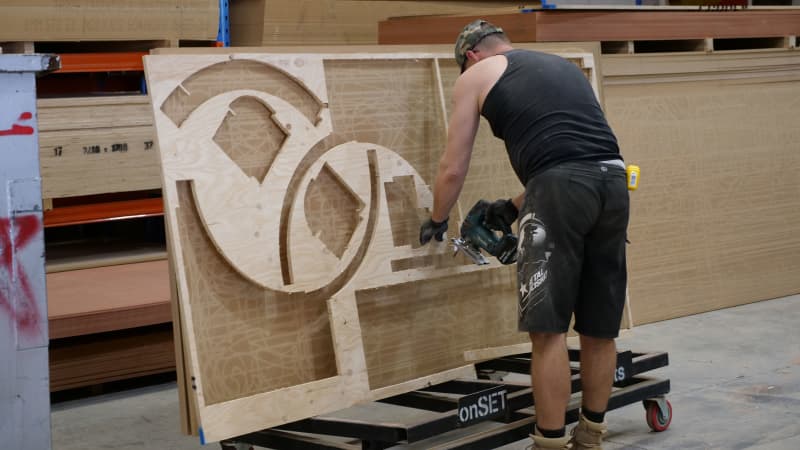

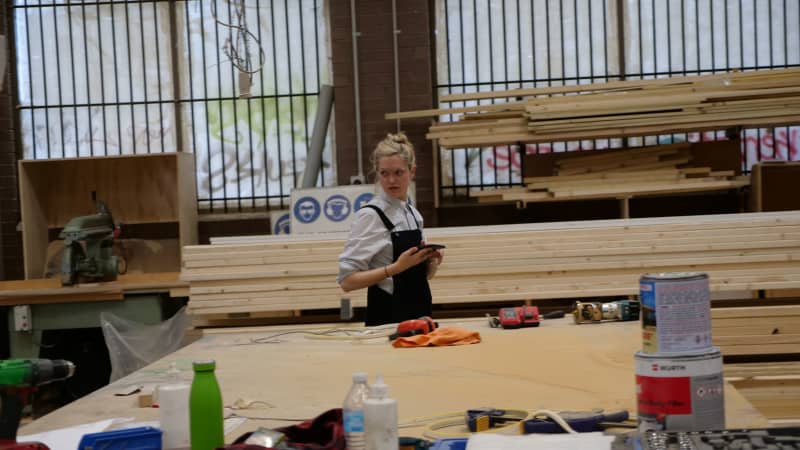
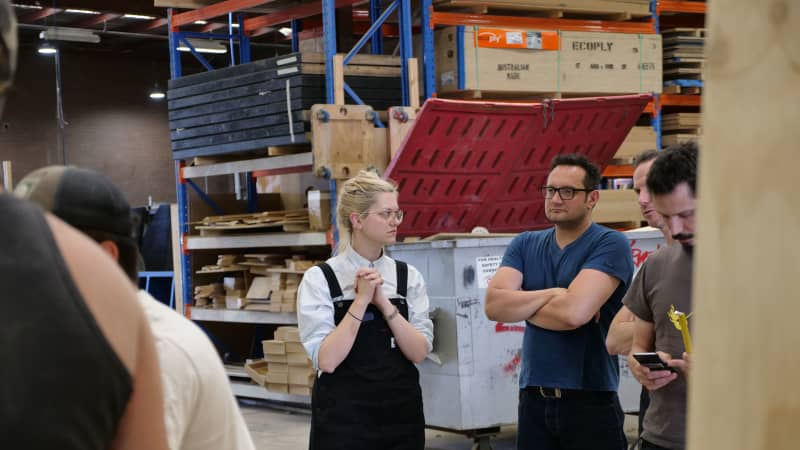
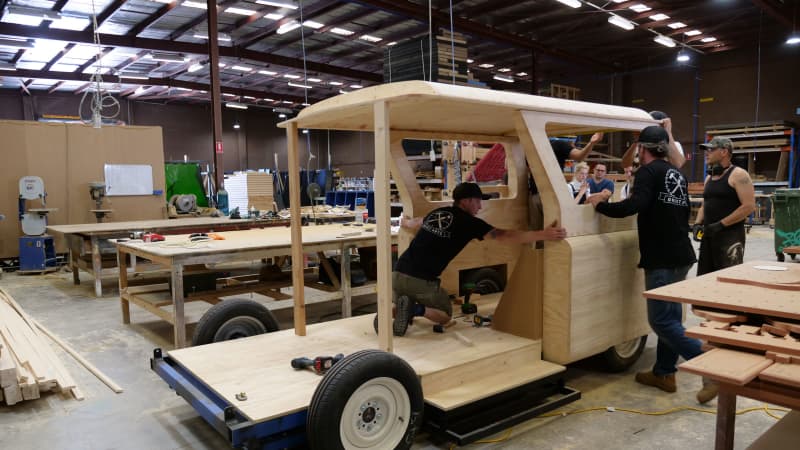
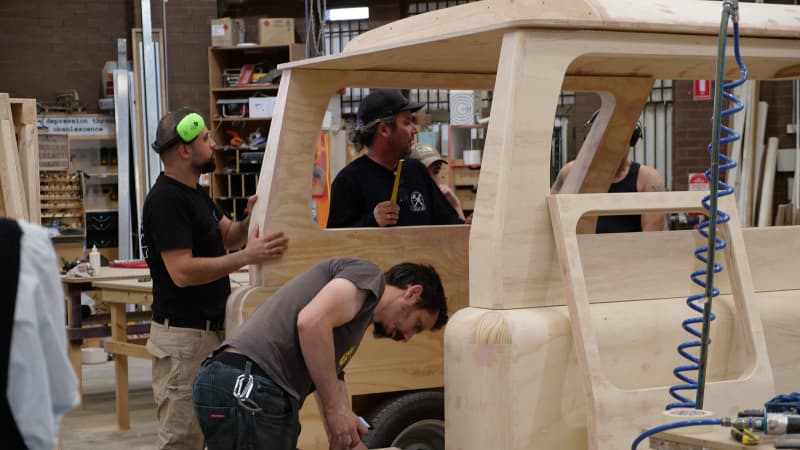
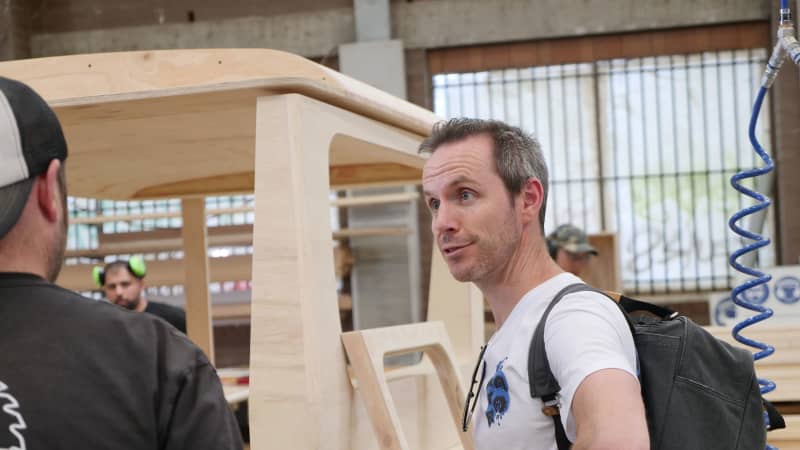
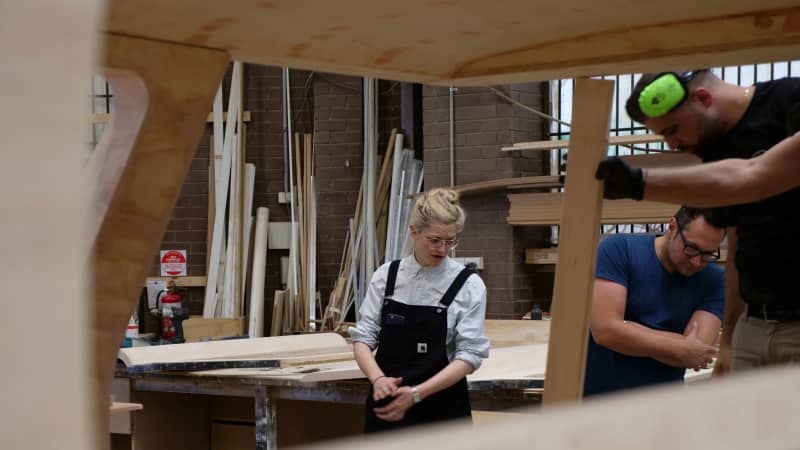
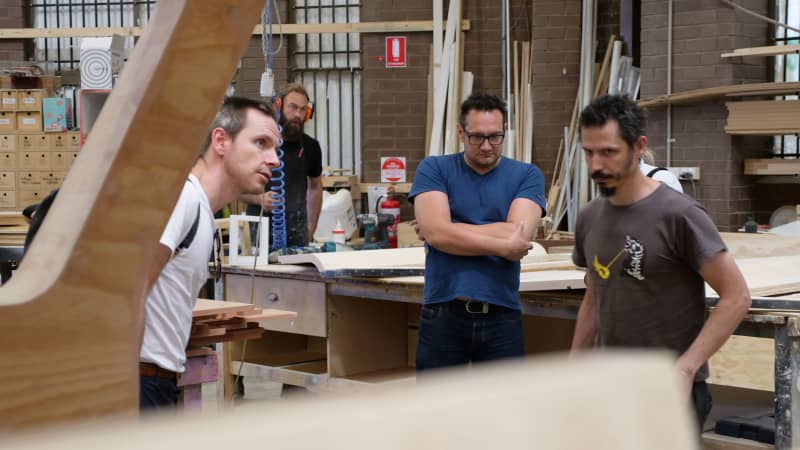
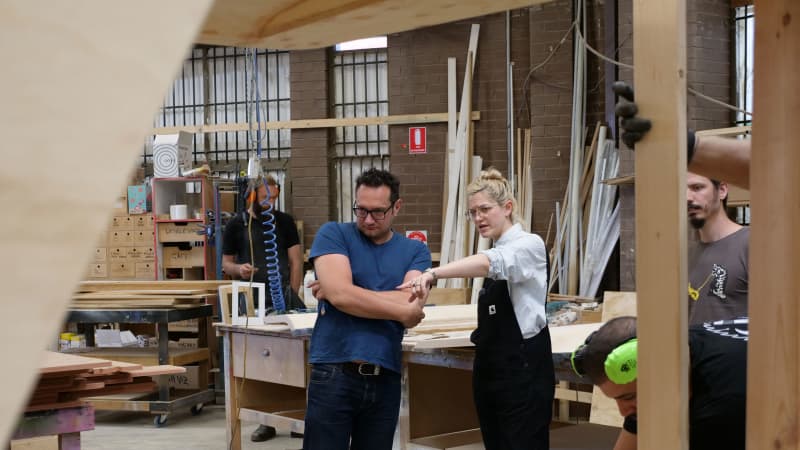
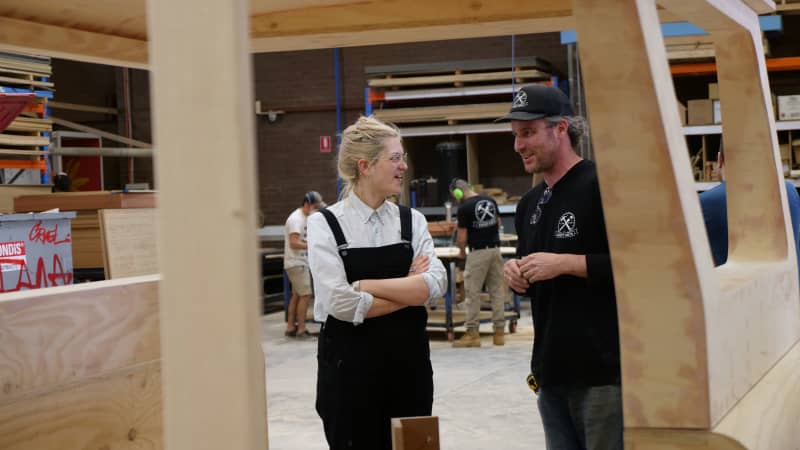
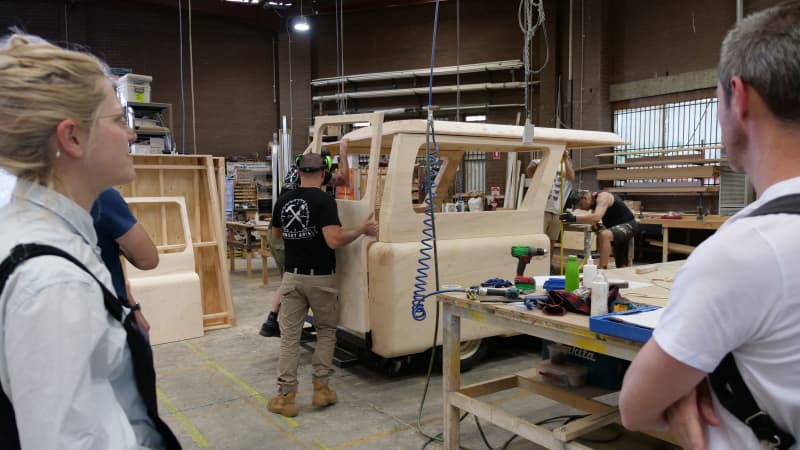

Sarah Corridon: What were your first impressions when you read the script?
Alicia Clements: My very first impression was ‘I can’t wait to watch Miriam perform this,’ followed swiftly by ‘this is going to be hard to design…’ There are no clearly defined scenes written into the text and we have to move from memory to memory with complete fluidity. So that was the major creative conundrum we had to solve. How do we stage scenes and people literally springing to life, out of Alan Bennett’s mind? [Director] Dean [Bryant] had the idea of using tracking mechanisms to deliver scenery, such as the vans, and people into the space as Alan described the memories.
SC: What inspirations immediately jumped out to you in terms of constructing the van/s?
AC: The journey to creating our (two) vans was a long and complex one. We discussed renovating a real one for quite a while, but the model and retro look I was hoping for couldn’t be easily found in Australia. We also needed two identical vans so we could paint one of them yellow! The final – and possibly most crucial factor – was that Miriam would be spending a LOT of time on stage in the vans, so they needed to be comfortable and safe for her work in. I really believed we could build them and make them look great and I’m so thrilled with the results we achieved. I had to study the look and shape of 1960’s/70’s Bedford vans for a number of weeks and experiment with modelling miniature versions myself before handing it over to the builders.
SC: Where did your design research begin for the broader set?
AC: Dean and I began by talking about the landscape of memory and what that might look like. We talked about how we remember certain details and not others: a person might always appear in your memory in one specific outfit or you might remember the texture and colour palette of your street but not the individual houses. We decided to create a dark space, but one that still retained the character of Alan Bennett’s Camden St with one lamp post, an old brick wall and cobbled floor. We also did a lot of logistical planning very early on – before the design was even solidified – reading through the text together for hours with model pieces of furniture, tracking where everything would come and go from.
Step 2: The van makes its way to MTC HQ for scenic treatment. The van required a staff of three applying four layers of paint over 20 hours.
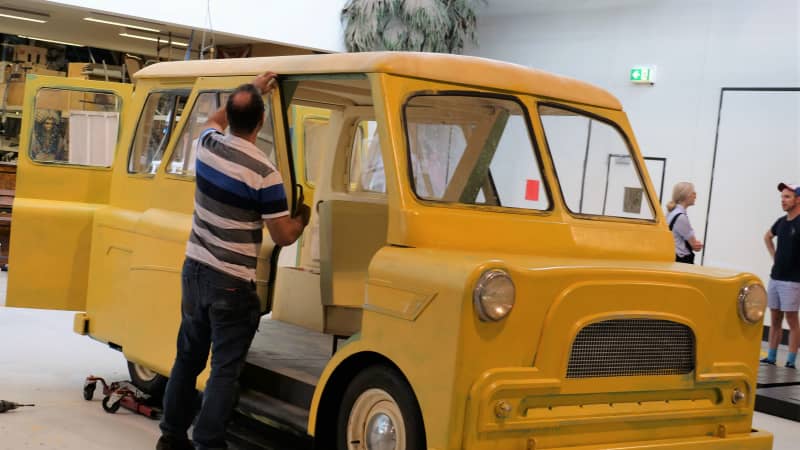
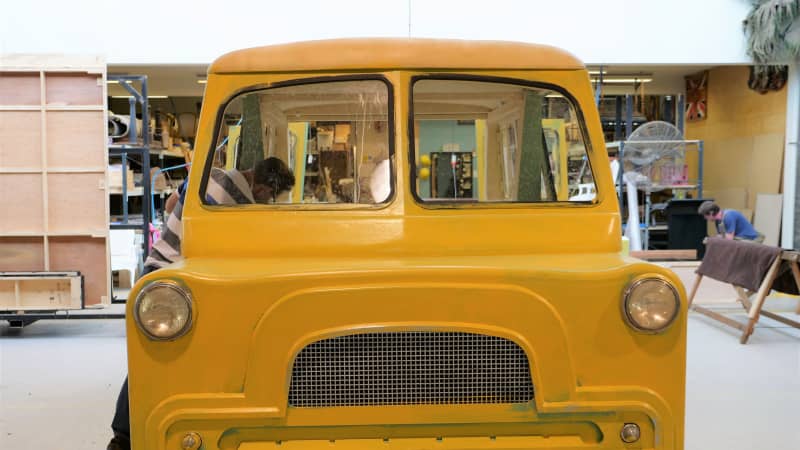
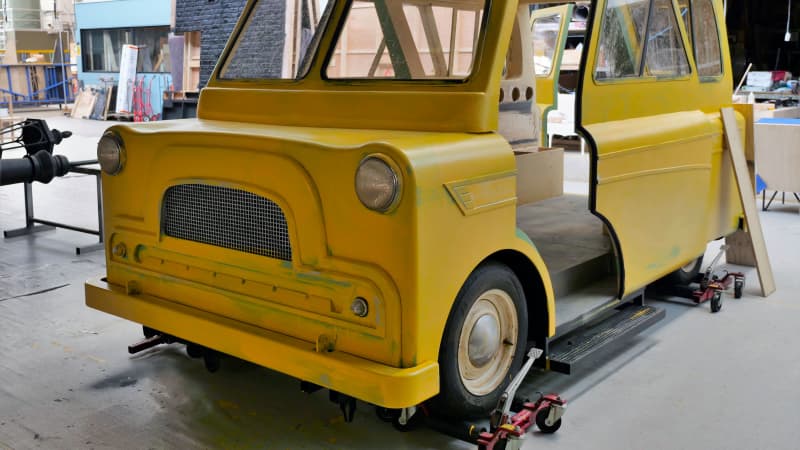
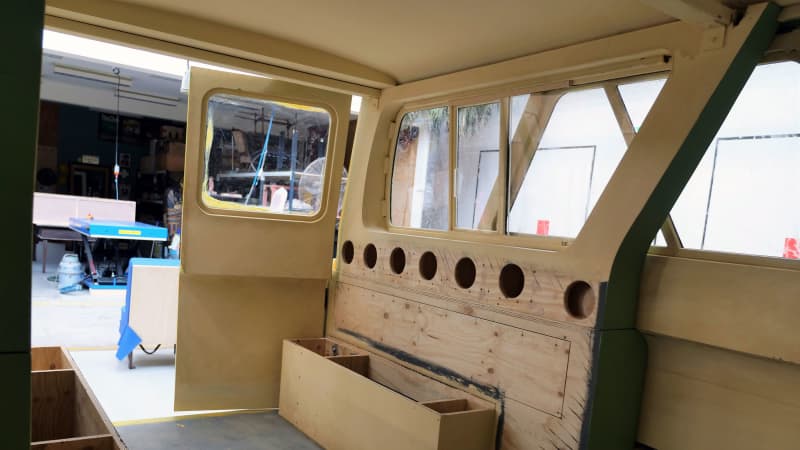
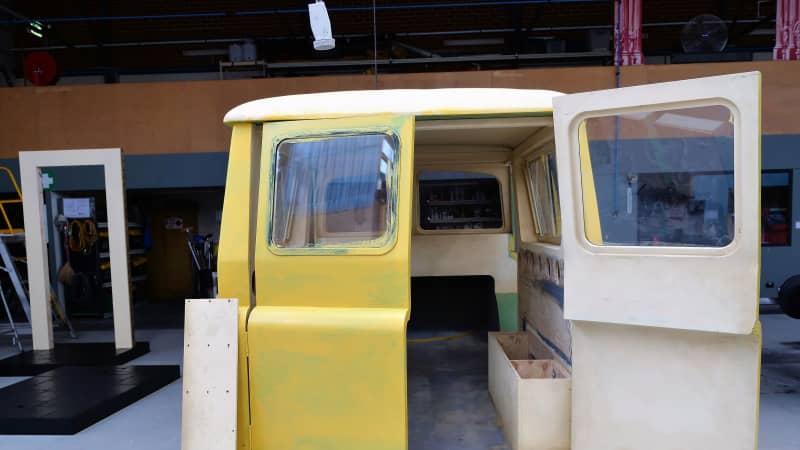
SC: What was the most challenging aspect of this design process to pull together?
AC: I think there were different design challenges for different departments. For myself, the biggest challenge was drawing, designing and modelling the vans to make sure they looked as detailed and realistic as possible, whilst also accommodating various ergonomic and safety requirements for the performers and crew. For Dean and the electrics department, the automation of the tracks and revolve occupied a huge amount of their energy and time. For such a simply written show there’s actually a large number of technical challenges that require solving – i.e. flying the yellow van up to ‘heaven’ in the finale, the wheelchair lift, the coffin that Miss Shepherd bursts out of, etc. All of those elements took weeks of discussions and workshopping to execute successfully.
SC: Can you give us a run-down of the stages of development you went through to create the final vans we see on stage in the show?
AC: It took a lot of research and prototyping to create a ‘buildable’ design for the vans. Vehicles are such smooth, shiny, complex shapes with multiple compound curves – and we’re trying to build them out of wood. I started by compiling a lot of visual research, including technical drawings of different types of vans, to get my head around the correct look and size of a late-1960’s era Bedford Van.
I realised early on that I would have to enlarge the size of the vans in order to make them easy for Miriam to walk through and be in for such long periods of time. I had to think about what they look like inside as well as outside – what does the dashboard look like? The front seat? The interior roof, floor, benches, handbrake etc. Every 360 degree detail from inside to out had to be thought-through and drawn up for the builders. Dean and I tried to anticipate every way the vans might be used in advance to minimise the amount of problem solving required once they got into the room.
Once the van shells were built and sent to MTC, our workshop applied all the hardware, many layers of peeling paint, and installed the lighting and electrics, which operated the rear doors and powered the first green van to drive down the stage. The final stage was for me to decorate the interiors of each van with all of Miss Shepherd’s hoarded belongings.
Step 3. The van enters the rehearsal room for the cast to act alongside.

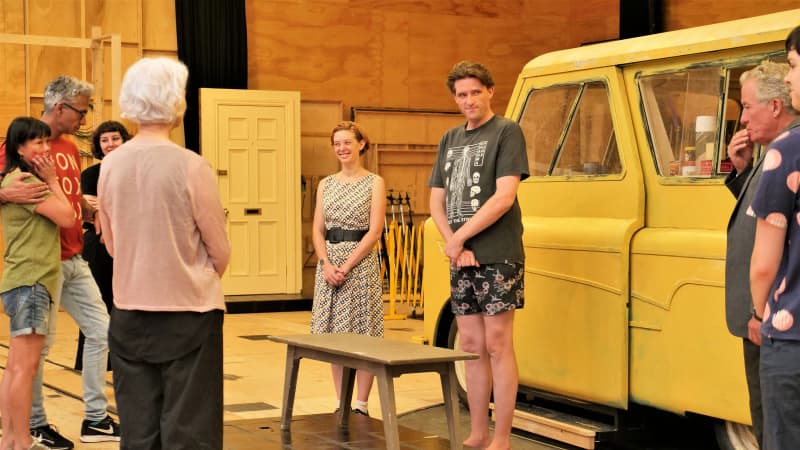
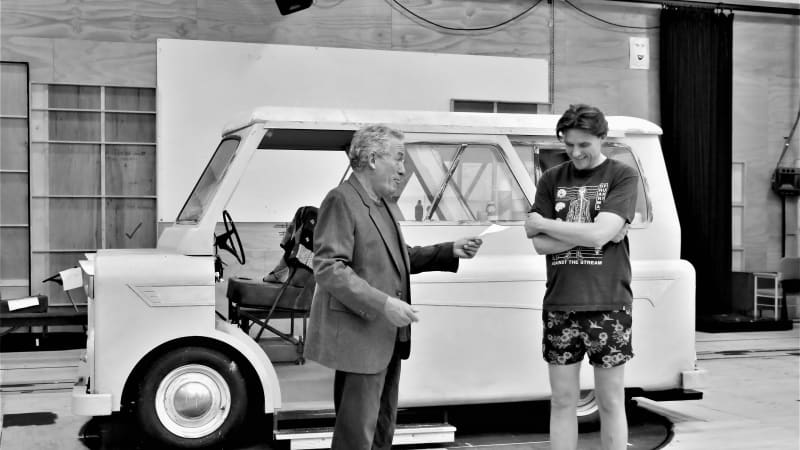
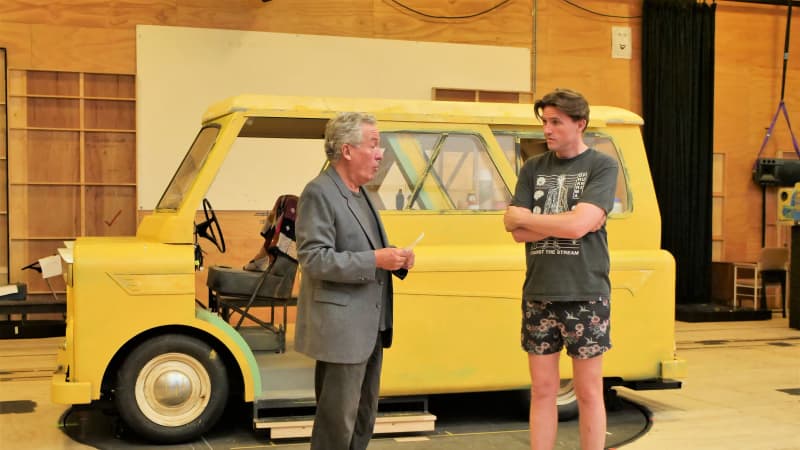
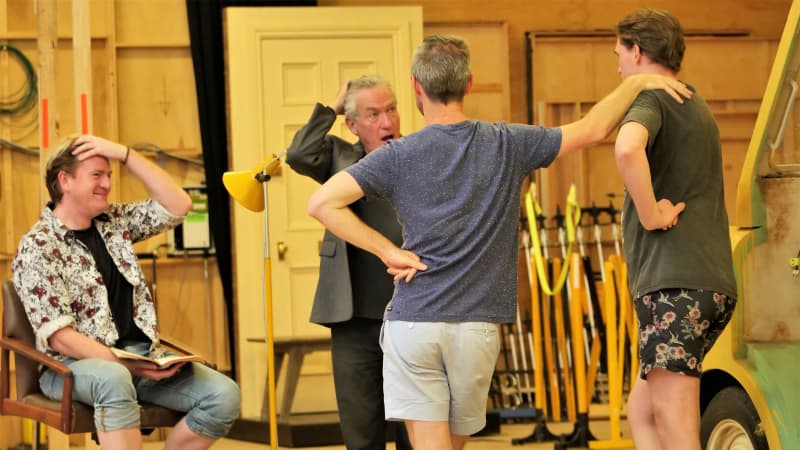
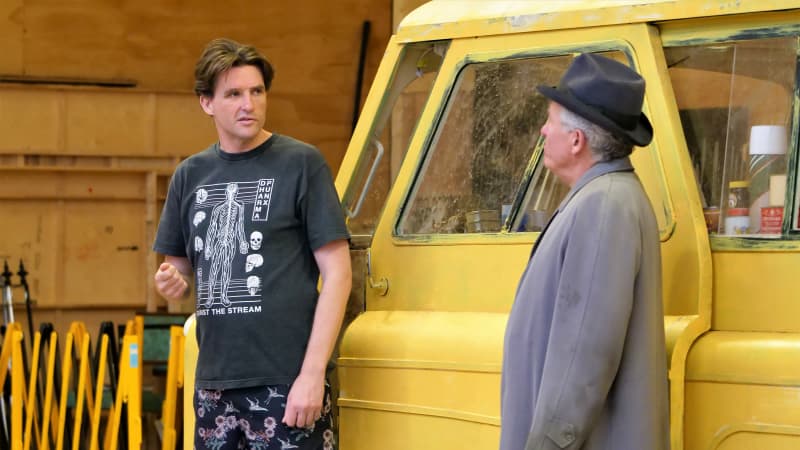
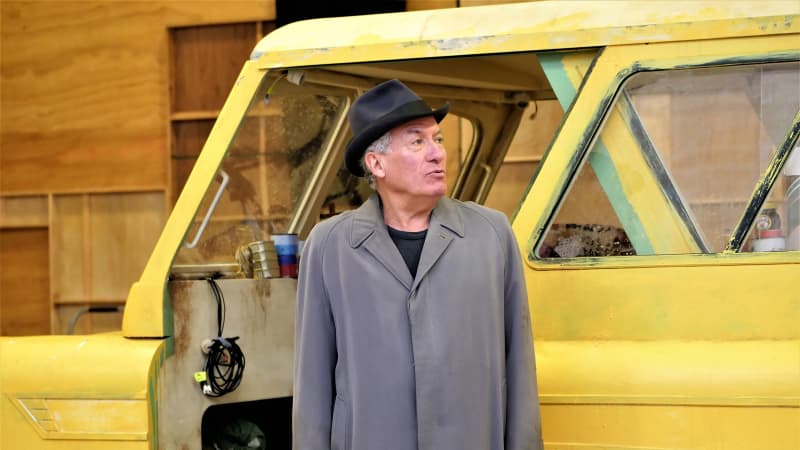
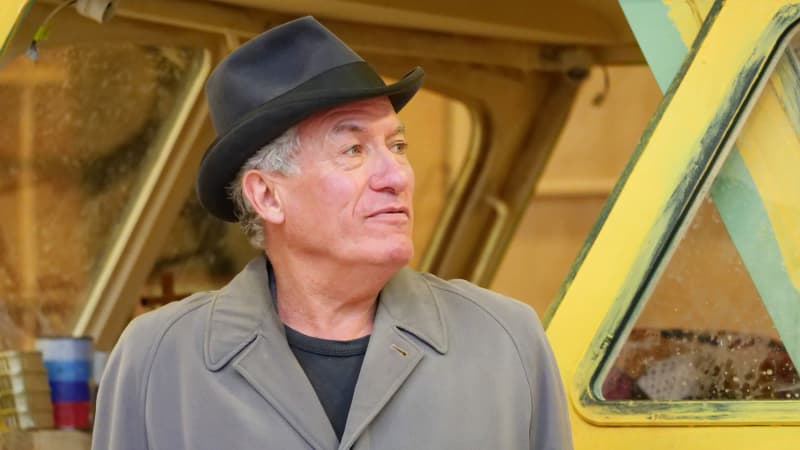
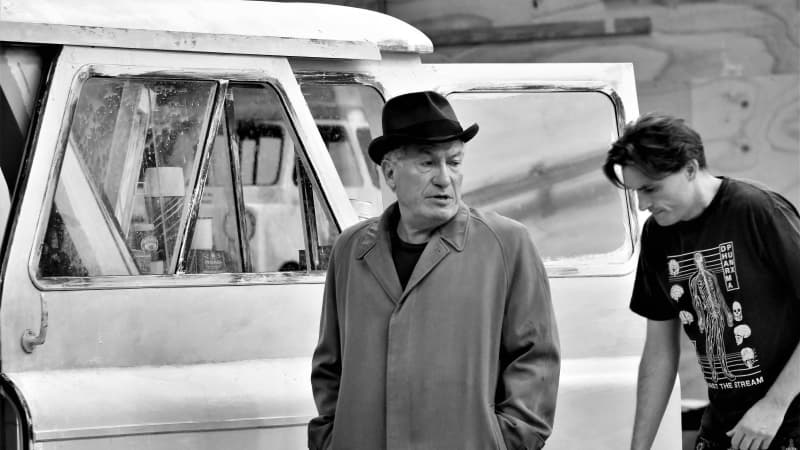
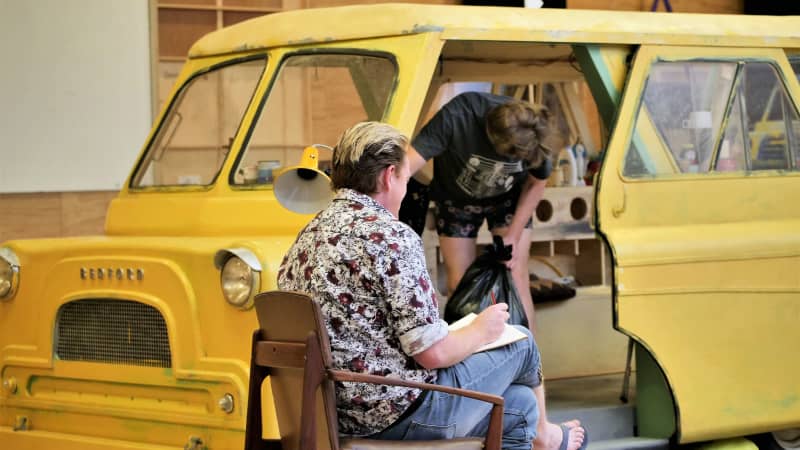
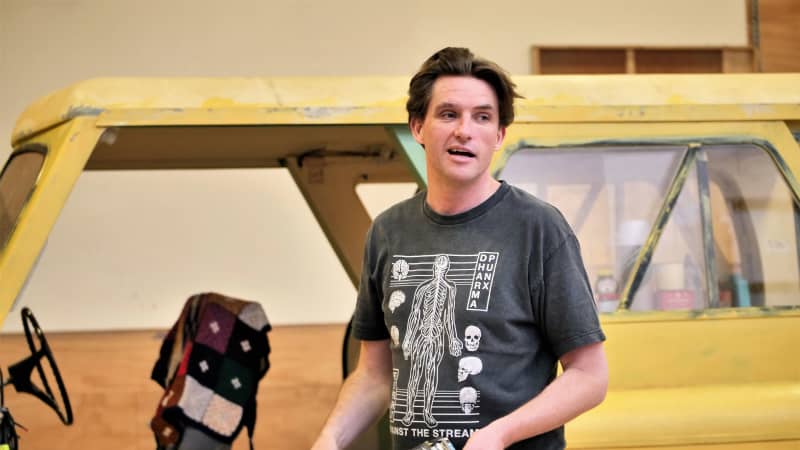
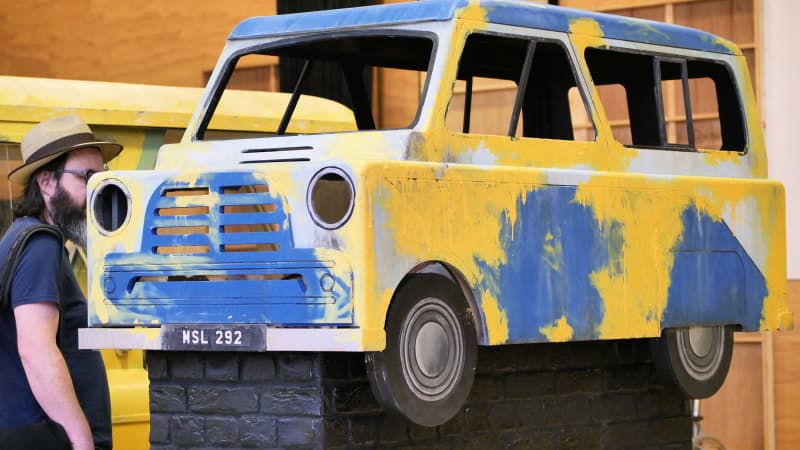
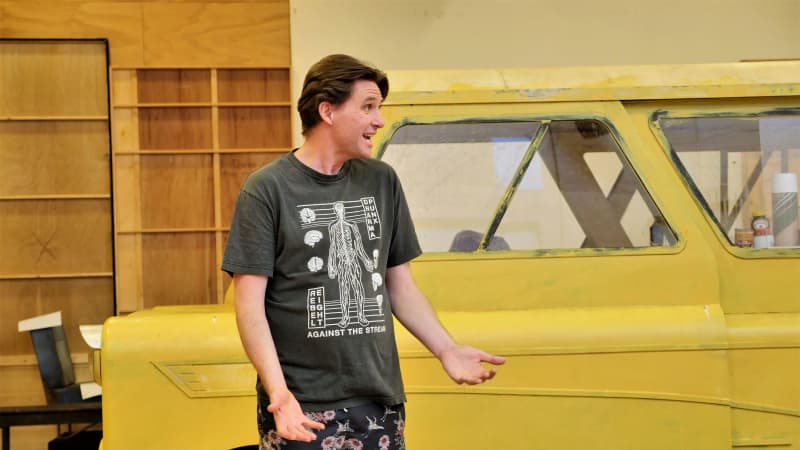
SC: How did the van need to accommodate the cast while they performed on stage?
AC: Miriam was the only cast member who worked consistently inside the van, and she was always accompanied by Stage Manager Christine Bennett, who operated the interior doors and did her quick costume changes. It’s a physically demanding job to be constantly climbing in and out of the van and it’s also hot inside when all the doors are closed. The van was only just large enough for Miriam to stand upright inside, but any other cast and crew had to be careful of their heads. I was constantly experimenting with the amount of dressing I could put inside the van – it needed enough to look full and absolutely FILTHY but not so much that Miriam and Christine couldn’t move around easily inside it. That was a long process of working with stage management to determine the right balance.

Miriam Margolyes as Miss Mary Shepherd inside her van on the Playhouse stage.
SC: How did your collaboration with Director Dean Bryant help realise this vision?
AC: Dean is extremely rigorous and detailed in his process of developing the work, which means we collaborate on every element of the design together. I think there is a misconception that designers go off and create the look of a production on their own and bring it back to the director fully formed. In fact the best designs are usually the result of a mutual dedication of both parties to creating the visual world of the play. Sometime it’s hard to tell what the lines are between our various ideas.
Step 4. The van/s make it to the Playhouse stage, where it flies on and off stage for eight shows a week in a five week season. Stage Management, automation, lighting, and sound departments needed to liaise on over 200 cues from the moment the van drove onto the stage to the moment when it was hoisted into the fly tower at the show's end.
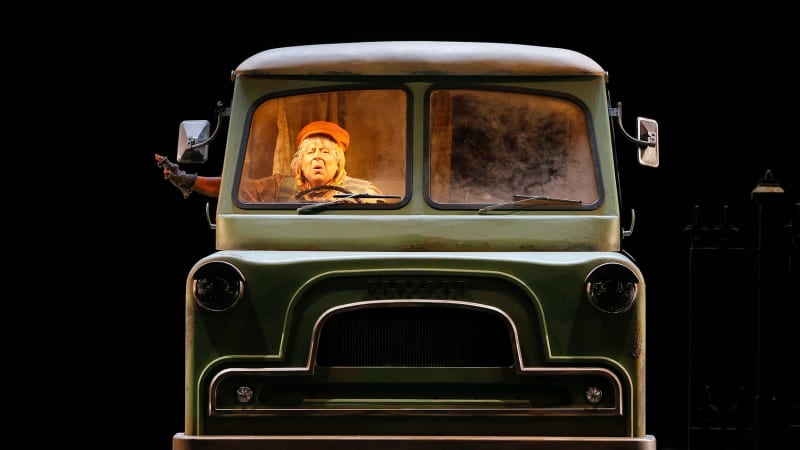
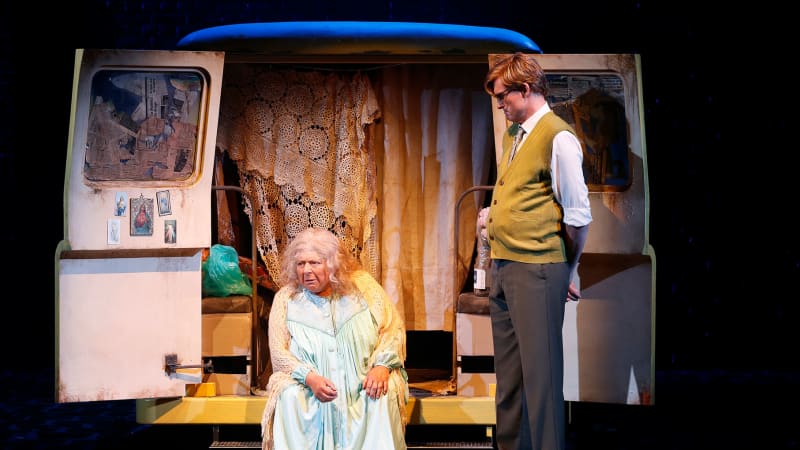
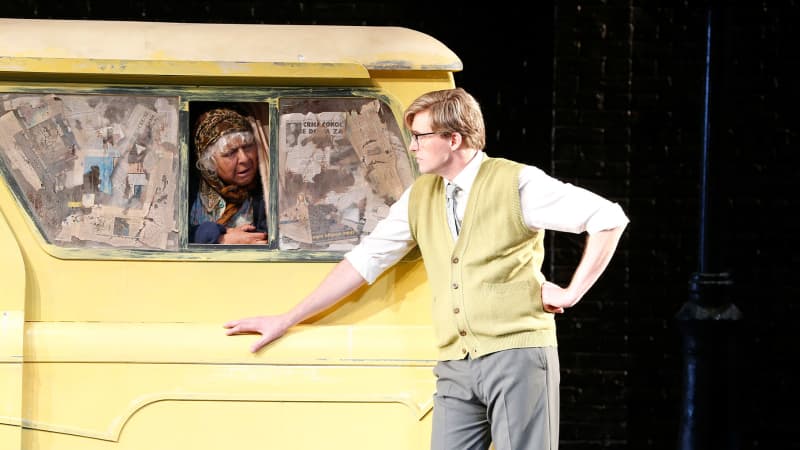
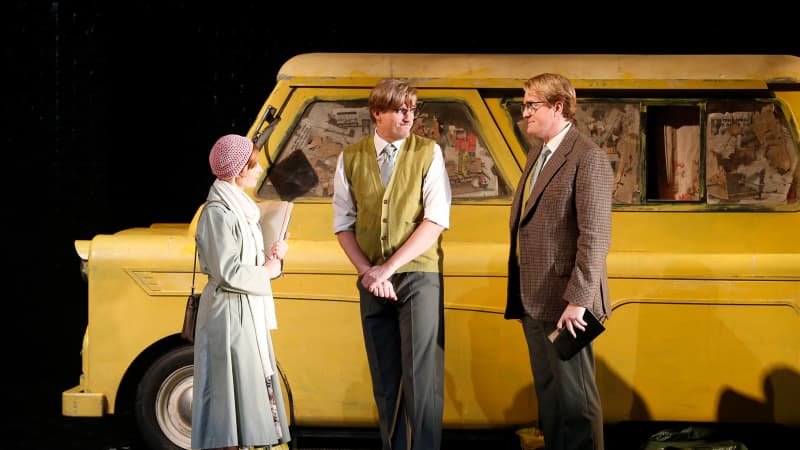
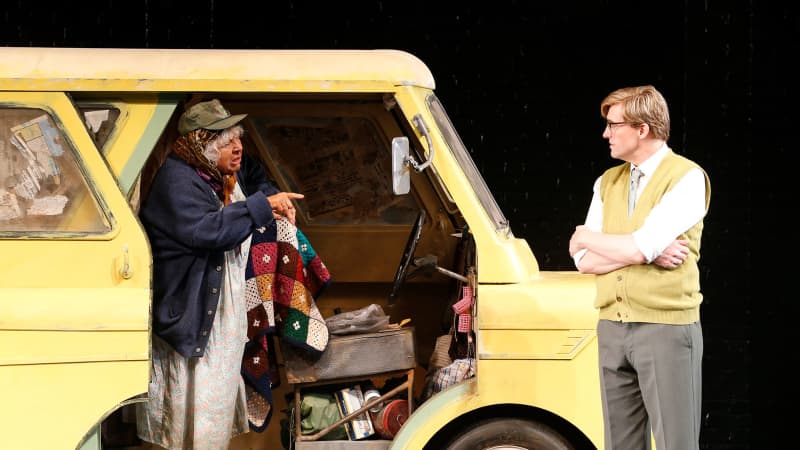
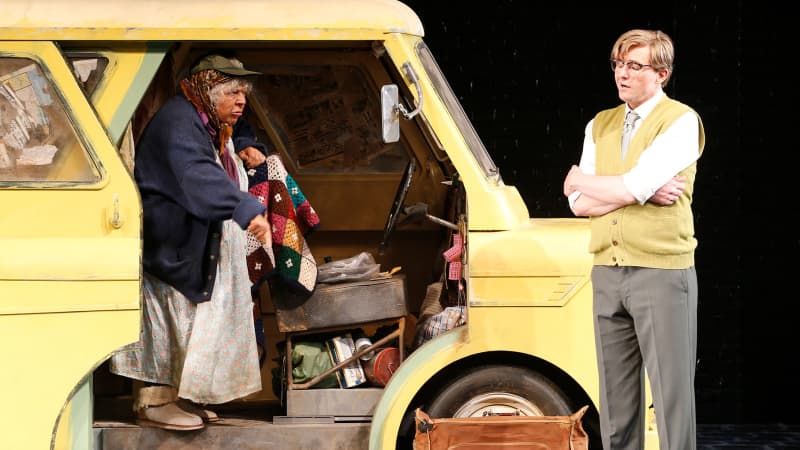
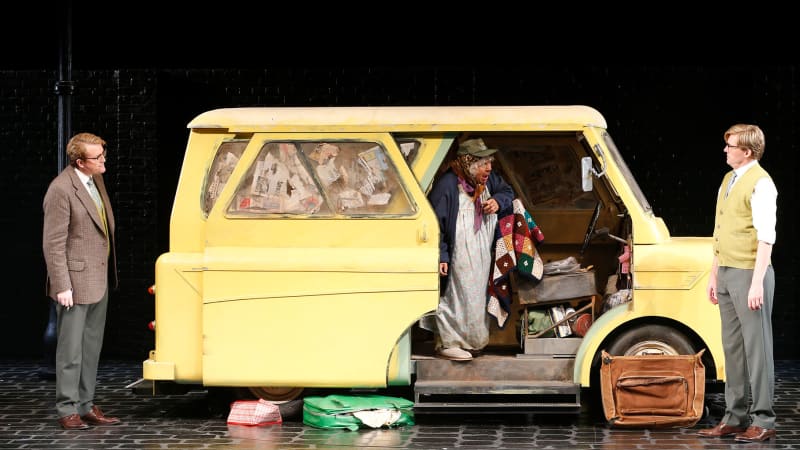
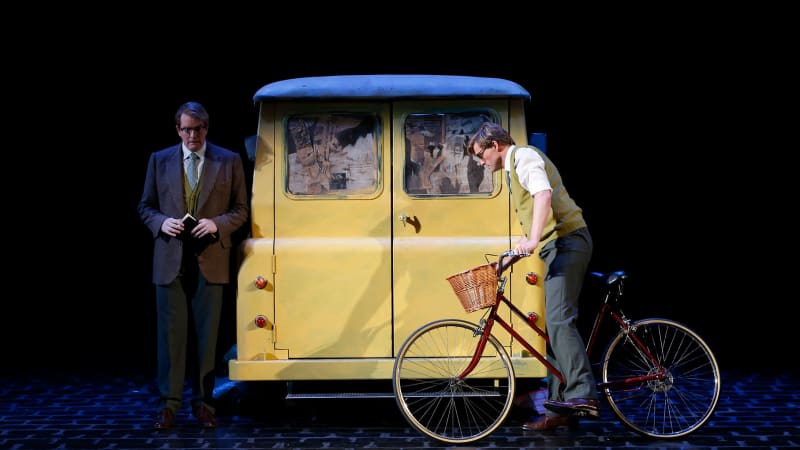
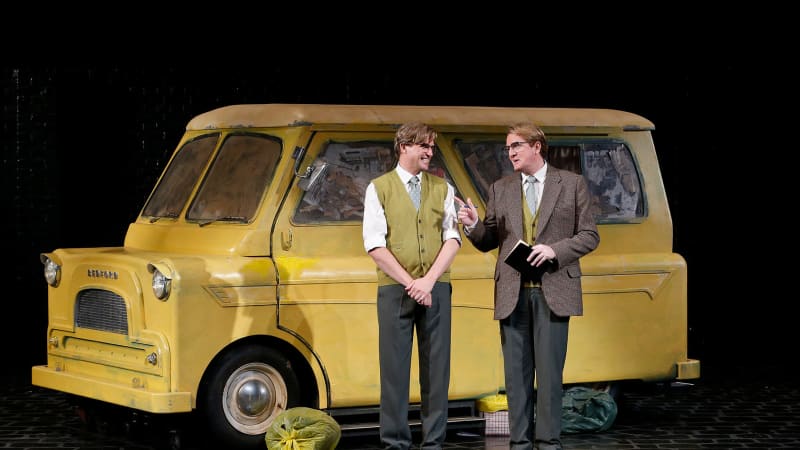
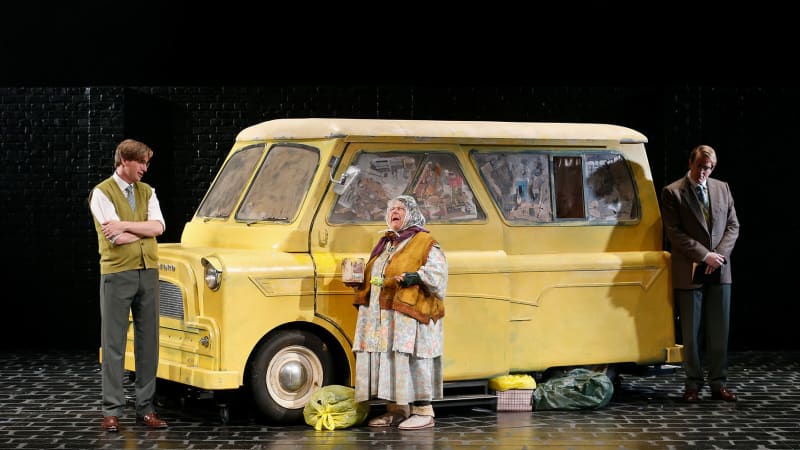
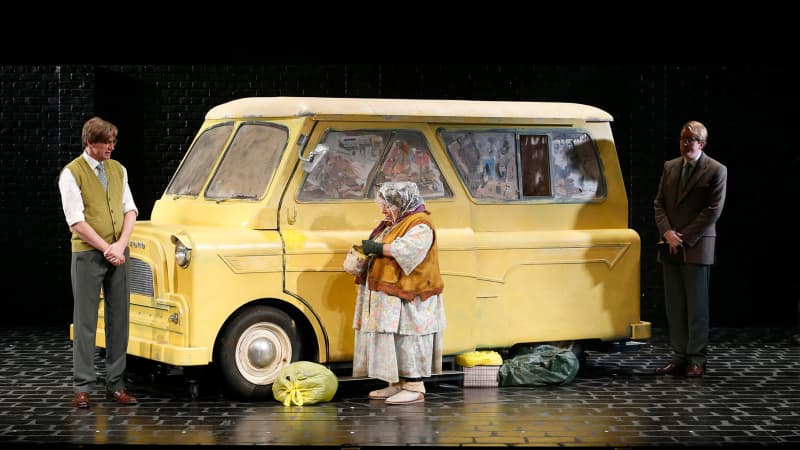
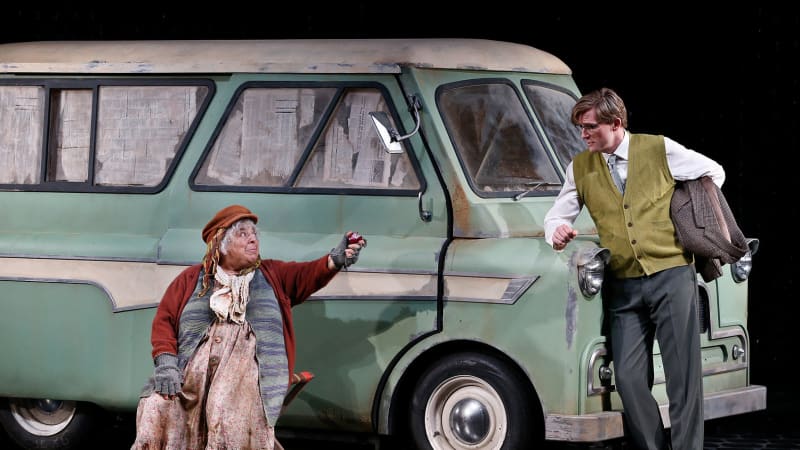
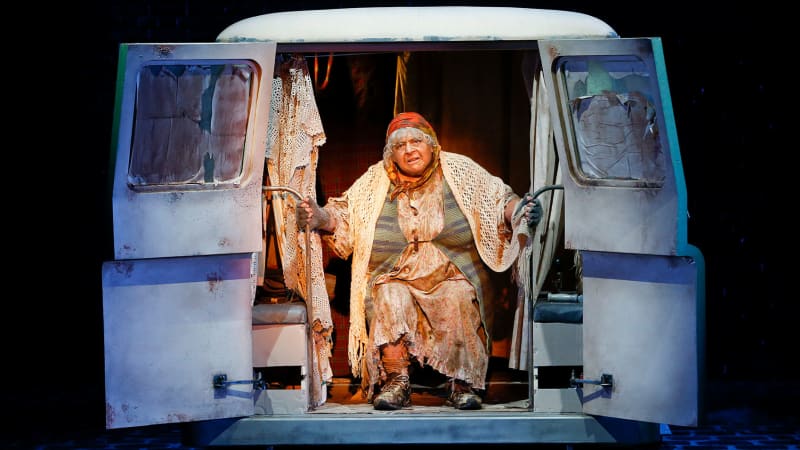
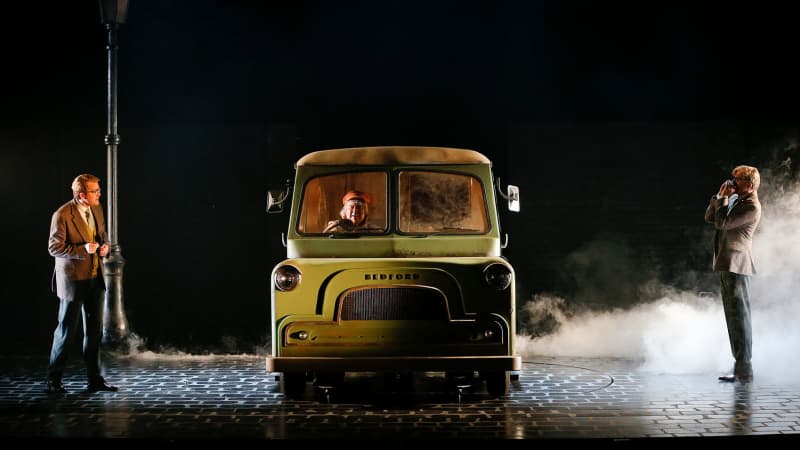
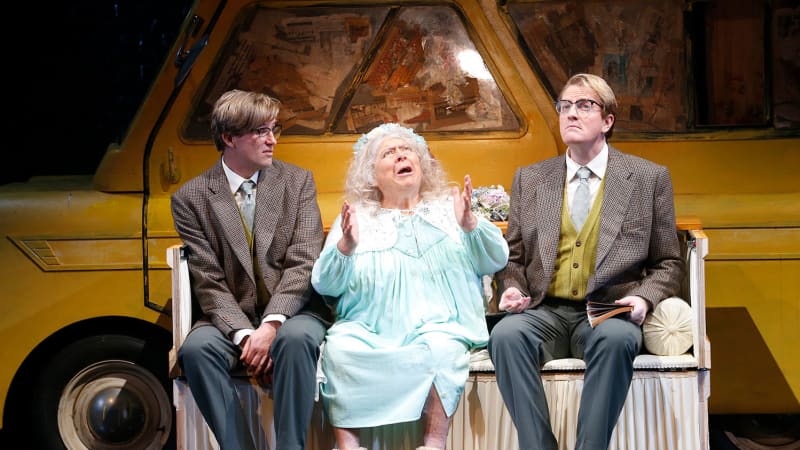
SC: Are there any funny stories or anecdotes you can share about the design process of this production?
AC: Miriam is outrageous and sometimes had me doubled-over with laughter, but a lot of what comes out of her mouth isn’t suitable for publication…!
SC: Do you have any rituals or habits that help you pull a show together?
AC: Cooking is my therapy when I’m facing a ‘creative block’. I think people would be alarmed to know how much time in my ‘process’ I spend staring at the wall trying to come up with ideas or solve problems. When I’m really stuck I remove myself from my studio and invent something glorious to cook for dinner – my current obsession is making fresh pasta.
SC: What is the most exciting moment for you as set and costume designer?
AC: There’s a lot of favourite moments – the first call I get asking me to design a new production is always super exciting because my brain explodes with a million ideas. But I have a real soft spot for those moments when an actor puts on their costume and says, ‘I love it!’ Helping an actor connect with their character via costume is extremely rewarding.
Published on 26 March 2019





